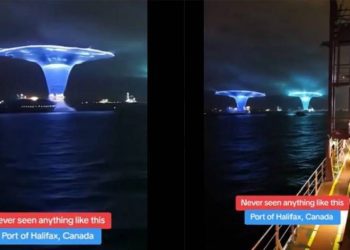BLACK sands on Mars have been revealed in breathtaking detail by the European Space Agency's (ESA) satellite orbiter.
The Mars Express, which has been orbiting the Red Planet for over 20 years, shows a surprisingly diverse landscape on the desert world in newly rendered footage.

The new video features observations from Mars Express's High Resolution Stereo Camera (HRSC), according to ESA[/caption]

The trenches of Nili Fossae have long been considered ideal for future human exploration[/caption]

Just like on the black sandy beaches of Iceland, the area is thought to host basaltic terrains[/caption]
The new video features observations from Mars Express's High Resolution Stereo Camera (HRSC), according to ESA.
It shows the orbiter navigating over the trenches of Nili Fossae, an area that has long been considered ideal for future human exploration.
It has even been earmarked as a future landing site.
“Because of what it could tell us about Mars' ancient and water-rich past, Nili Fossae was considered as a possible landing site for Nasa's Curiosity rover, before the rover was ultimately sent to Gale Crater in 2012,” says ESA.
Located on the northwest rim of the 1,200-mile-wide Isidis impact basin, Nili Fossae is a trough carved into the surface on Mars by a suspected impact some 4 billion years ago.
“The trenches of Nili Fossae are actually features known as 'graben', which form when the ground sitting between two parallel faults fractures and falls away,” ESA explains.
“As the graben seem to curve around Isidis Planitia, it's likely that they formed as Mars' crust settled following the formation of the crater by an incoming space rock hitting the surface.”
Inside the Mars Express mission

The Mars Express has provided scientists on Earth views of the Martian landscape since 2004.
The spacecraft launched on 2 June 2003 and arrived in Mars' orbit in December 2003, where it has remained ever since.
It was Europe's first mission to the Red Planet, carrying eight instruments and the Beagle 2 lander in tow.
While Beagle 2 was lost during its landing attempt, the orbiter is a 20-year success story.
The Mars Express has given scientists invaluable data on Mars and its two moons, Phobos and Deimos, over the past two decades.
It has provided the most complete map of the chemical composition of the atmosphere to date.
It has also traced the history of water across the globe, revealing that Mars once had conditions that could have hosted alien life.
Beyond that, the spacecraft has provided crucial relay communication services between the Earth and the Nasa rovers on the surface of Mars.
Just like on the black sandy beaches of Iceland, the area is thought to host basaltic terrains.
Scientists have also discovered olivine-basalt sands in the region, which can appear green and black.
According to ESA, scientists have found an “impressive amount and diversity of minerals found in this area, including silicates, carbonates, and clays”.
“These minerals form in the presence of water, indicating that this region was very wet in ancient Martian history,” the space agency adds.
Scientists believe water not only flowed across the surface of Mars, but beneath it as well.
Nili Fossae is considered one of the most colour-diverse regions on the Red Planet – but it's not the only spectacle future Mars tourists might enjoy.


Nili Fossae is a trough carved into the surface on Mars by a suspected impact some 4 billion years ago[/caption]

The Mars Express has provided scientists on Earth views of the Martian landscape since 2004[/caption]Source






























